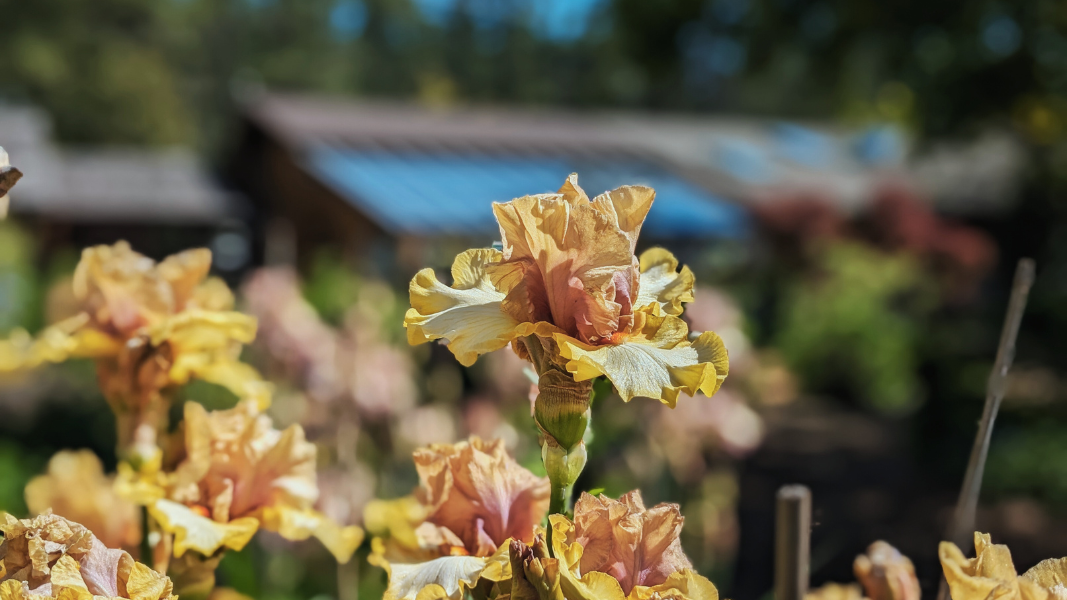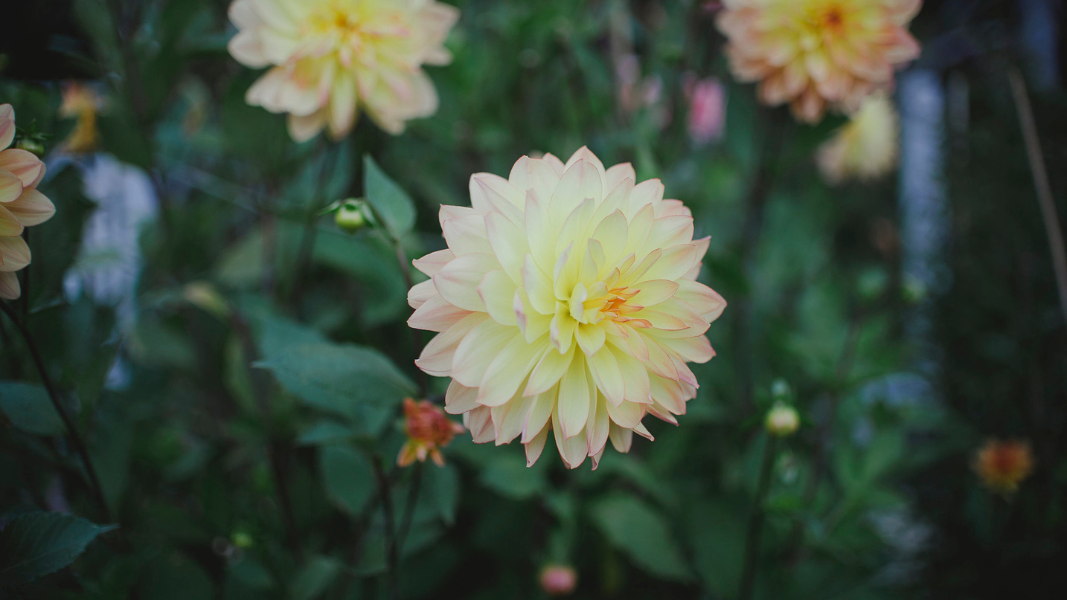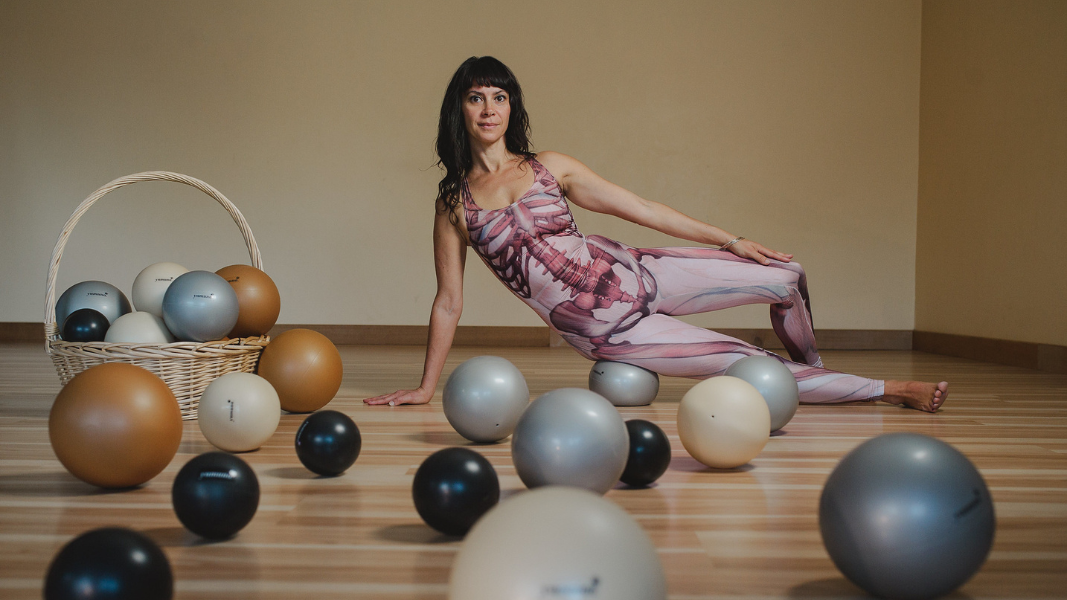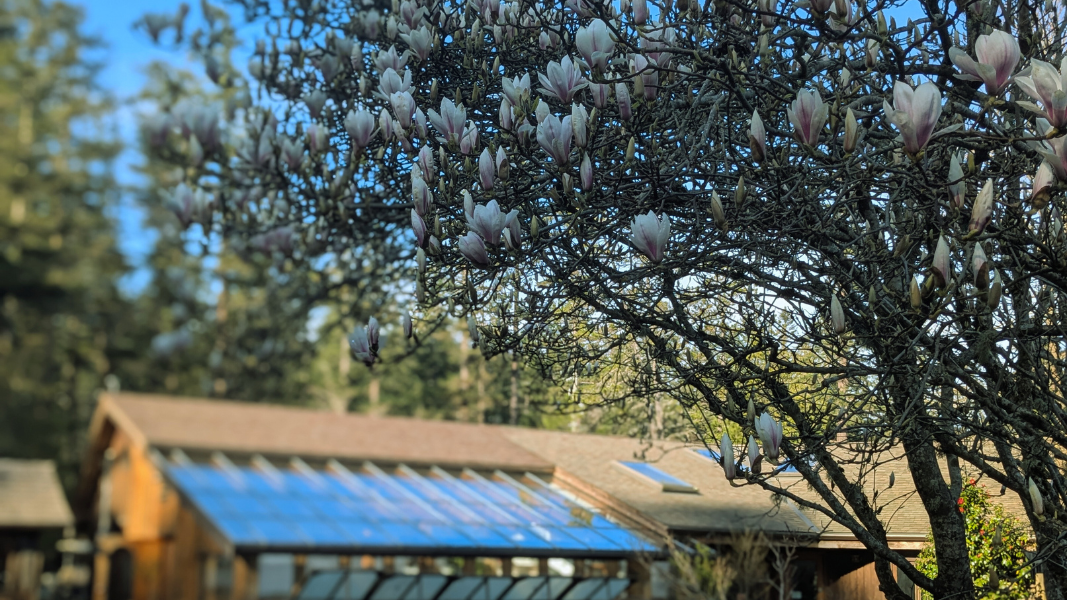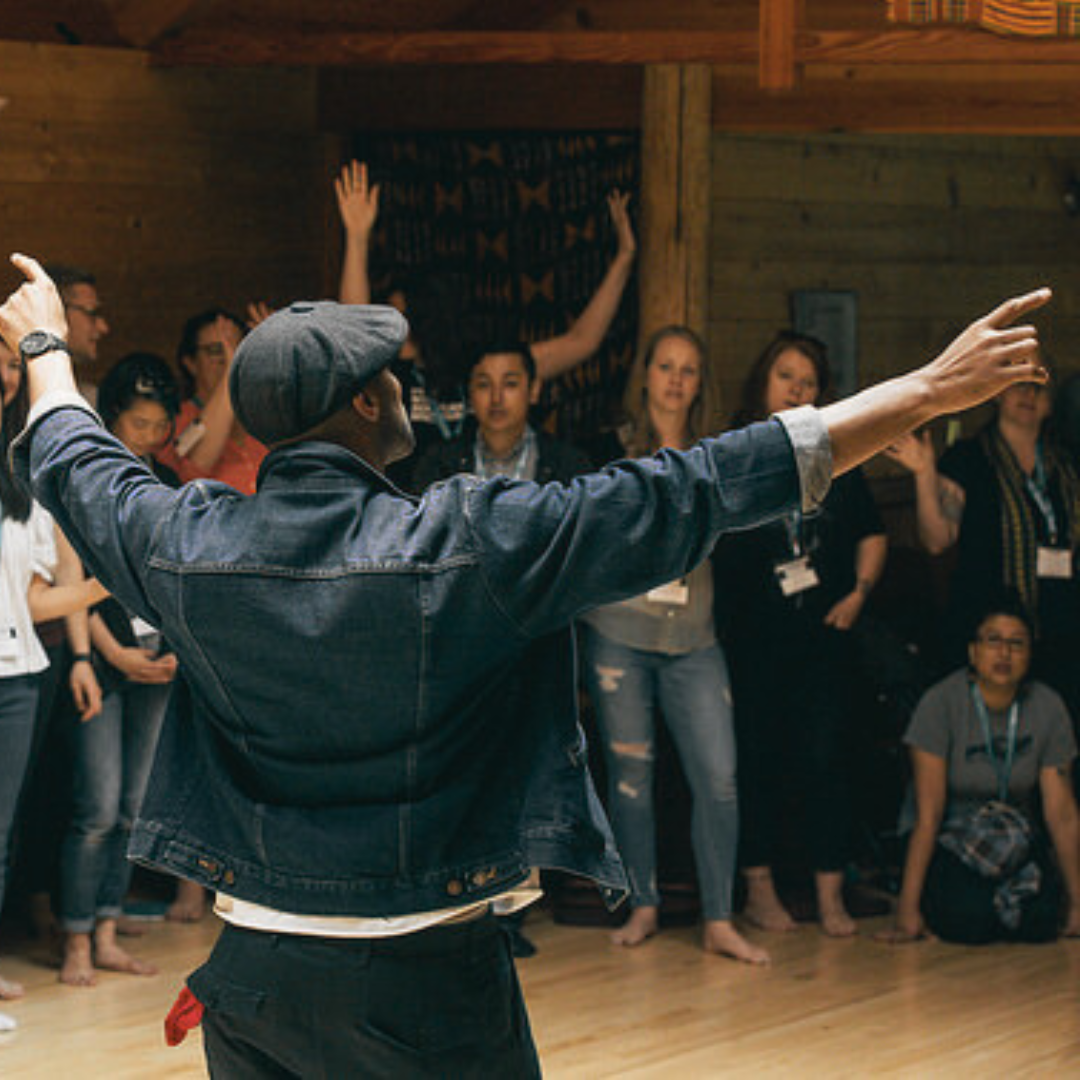It was April and the sun was out. After months of wet, cloudy and dreary weather, blue skies hung lightly over the Salish sea. For a handful of Hollyhock staff, the blue skies and sun meant a dramatic change was coming for our campus. The summer season was on the way and with it would be close to two thousand visitors to Hollyhock.
Hollyhock is a container. Comfortable, safe and welcoming. With our sweeping vistas, humming garden and nourishing food, travelers get to escape, briefly, from the humdrum. They get to shake out of the rhythm of their day-to-day. At Hollyhock, they find wonder, joy, and a less than modest measure of magic.
But it is no small task to keep this little charity going. The Hollyhock campus battles against howling winter winds, sodden spring storms, and late-summer smoke. Not to mention the slow but tireless growth of plants and trees. Their roots and branches worm into the solid structures of our gathering places and undermine decks, roofs, and foundations.
For decades, an intrepid team of caretakers have stewarded this place. Without them, it would not keep going. I want to tell you one story of some of what that work takes.
For Holly Mackay, Hollyhock’s Garden Manager, the work of starting the season at Hollyhock starts with planning at the height of the rainy and windy season on Cortes Island. But by the time the sun comes back out in March it isn’t a matter of planning, it’s a race against time for Holly and her three-person garden team.
First, they must address the mulch that is put down on the garden in the winter needs to be removed. If they don’t remove the mulch, the sprouting perennials will be starved for light and, if they are stunted and discolored, they have little hope of inspiring anyone.
But that isn’t all. Hollyhock’s garden is more than a source of flowers. It is a source of so much of the nourishing food that sustains the inner work of this community. Hundreds of lettuce starts begin in our greenhouse. So do multiple cultivars of tomatoes and so many of the herbs flavoring the food in the kitchen.
2019 will be the last year of operation for our venerable old greenhouse which is slated to be rebuilt. For the time being, it spends the winter as a shelter for our vulnerable veggies. In the winter, Hollyhock tomato plants are brought inside from the garden and planted under the tables of the greenhouse, where they hibernate among the fallen leaves of the robust grape plant that has made the greenhouse its home and where they are relatively protected from the winter weather.
Each of the herbs and vegetables grow in a very particular window of time. If the timing of their starts isn’t precisely right, they won’t grow as large or abundantly as they need to. For Holly and the team, that means re-tooling the greenhouse, pronto, from safe tomato cocoon to veritable veggie conveyor belt.
Then, starting mid-March, shipments of manure will need to arrive to fertilize the soil, and it is a yearly scramble to rally the Hollyhock community’s hands and trucks to support.
It’s not always fun driving over multiple ferries with a truckload of manure. But, if all goes well, Holly and the team organize a helping-hand or two to transport the chicken and horse manure either over from Vancouver Island or down from Blue Jay Lake Farm in Cortes Island’s Green Valley. Once here, that manure is topped up by kelp meal from the Salish Sea and bone meal to make the soil as fertile as we can manage.
Finally, with the garden’s 50+ seed varieties planned, the beds de-mulched and fertilized, the paths raked, and the veggie starts humming along in the greenhouse, it’s time to plant the 200+ varieties of flowers and herbs which, with careful work, sunshine, and a little luck, sets up the garden for another exceptional season.
But stewarding the garden is not all a race against the clock. The Hollyhock garden is an evolving and interdependent ecosystem. It is shepherded by Holly and the garden team and stewarded by the suppliers, painters, photographers, manure conveyors, residents, visitors, neighbours, and donors who put their energy into sustaining it. Not just week to week, but year to year, and decade to decade.
Little surprise, then, that it is the perennial plants that excite the garden team the most. During its first year, a perennial plant like the Itoh Peony, a new arrival this year, may not bloom. It may not bloom in its second year. Or its third. But eventually it will bloom. Over the years, together, all these hands create a mosaic of blooming perennials that hums with colour and inspiration from the first frenetic and blazing days of spring sun to the first frosty nights of November when the tomatoes come in to sleep and the mulch rolls in to protect the slumbering bulbs.
For all its fast-pace and all the sweat and hard work that goes into Hollyhock’s garden, it is its peaceful permanence, the years of stories told in our soil, that connect us, in 2019, to both Hollyhock’s long past of gathering, learning, and healing and to an uncertain global future where learning, growing, and healing will be more critical than ever. That history that sneaks up through the feet of guests trodding along our garden’s well-raked pathways and shines out through their hearts, their brains, and their hands.
A great dream of this amazing community, after all, might be to plant seeds the full flourish of whose flowers we may never get to contemplate ourselves.
Thank you to all who make that possible!
And, if you want to help Holly and the garden team do this important work, please consider making a donation to Hollyhock here.
Photo Credits: Darshan Alexander, Amanda Mary Creative


